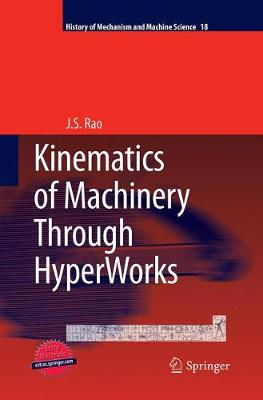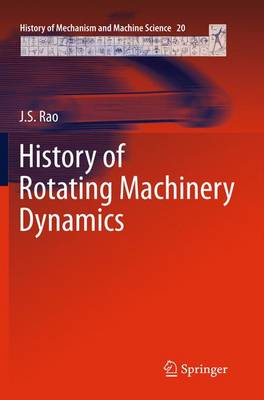History of Mechanism and Machine Science
2 primary works
Book 18
The concept of moving machine members during a thermodynamic cycle and the variation of
displacements, velocities and accelerations forms the subject of kinematics.The study of forces that make the motion is the subject of kinetics; combining these two subjects leads to dynamics of machinery. When we include the machinery aspects such as links, kinematic chains, and mechanisms to form a given machine we have the subject of Theory of Machines.
Usually this subject is introduced as a two-semester course, where kinematics and kinetics are taught simultaneously with
thermodynamics or heat engines before progressing to the design of machine members. This book provides the material for first semester of a Theory of Machines- course.
Th is book brings in the machine live onto the screen and explains the theory of machines concepts through animations and introduces how the problems are solved in industry to present a complete history in the shortest possible time rather than using graphical (or analytical) methods. Thus the students are introduced to the concepts through visual means which brings industrial applications by the end of the two semester program closer, and equips them better for design courses.
The International Federation for promotion of Mechanism and Machine Science (IFToMM) has developed standard
nomenclature and notation on Mechanism and Machine Science and this book adopts these standards so that any communication between scientists and in the classrooms across the world can make use of the same terminology. This book adopts HyperWorks MotionSolve to perform the analysis and visualizations, though the book can be used independent of the requirement of any particular software. However, having this software helps in further studies and analysis. The avis can be seen by entering the ISBN of this book at the Springer Extras website at extras.springer.com
Book 20
While the book traces the events leading to Laval and Parsons Turbines, the emphasis is on rotor and blade dynamics aspects that pushed these turbines to their limits in the last century. The tabular and graphical methods developed in the pre-computer era have taken different form in the last fifty years through finite element methods. The methods evolved in the last century are discussed in detail to help modern day designers and researchers.
This book will be useful to young researchers and engineers in industry and educational institutions engaged in rotor and blade dynamics work in understanding the past and the present developments and what is expected in future. Faculty and industry engineers can benefit from this broad perspective history in formulating their developmental plans.

